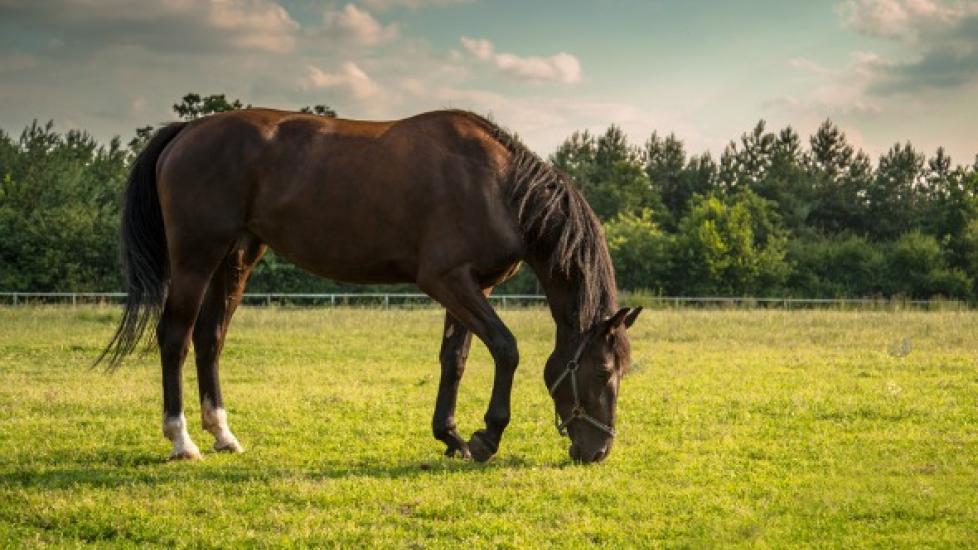Curb in Horses
Hock Swelling in Horses
Curb is a commonly found condition in highly active horses and is distinguished by swelling in the plantar tarsal ligament, the long band of tissue that runs down the lower part of the back of the hock. When this area of the leg becomes inflamed, the horse is said to have “thrown a curb.” The condition is due to a series of traumas to the soft tissue of the hock. It is commonly seen in Standardbred racehorses and other horses that are performing highly physically demanding work.
Acutely, curb is painful and will result in lameness. If the inflammation becomes chronic, the lameness will subside over time.
Symptoms and Types
- Inflammation of the plantar tarsal ligament (along the hock)
- Swelling along the hock
- Warmth in the affected area
- Lameness (may seem to come on suddenly)
- Horse may stand with heel held up on the affected leg
Causes
Excessive work or an active lifestyle (e.g., hunting, jumping, pulling heavy loads) may all lead to curb due to the strain on the plantar tarsal ligament. Other possible causes include poor conformation of the hock such as:
-
- Sickle hock – irregularly angled hock
- Cow hock – legs point outward due to irregularly set back knees
Diagnosis
The veterinarian will examine the horse’s hock joint thoroughly, using ultrasound and/or X-rays to gain a better view of the lower leg. Curb can be present with a number of other ligament or tendon injuries, and in some cases a combination of injures is found to exist.
Treatment
In most cases, the only treatment that can be given for this injury is rest with pain relieving medications and cold compresses. If treated properly, this ailment is known to resolve itself, but often only after it has reached a chronic level.
Once the diagnosis has been made, follow you veterinarian’s instructions on the appropriate length of time for resting your horse and when you should begin exercising the animal again.
Living and Management
Complete rest is critical to promote full healing of the damaged ligament. Your veterinarian will recommend an exercise program for slowly rehabilitating the leg once it has healed.
